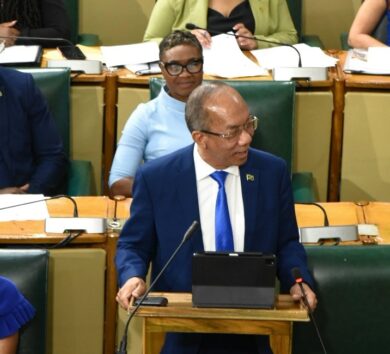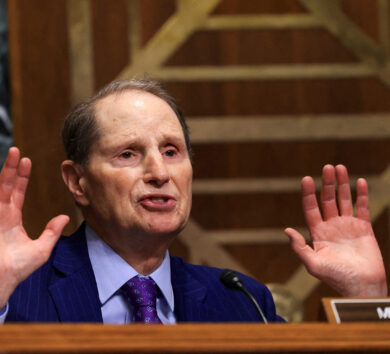

WASHINGTON (Reuters)
President Donald Trump’s fellow Republicans in the U.S. Congress are weighing steep cuts to the Medicaid health program as part of a wide-ranging budget package that also would cut taxes and raise spending on defence and border security.
That could lead to dramatic changes for one of the biggest U.S. safety-net programs, which provides coverage to 83 million low-income people, according to government figures. Here are some options being considered by Republicans on the House of Representatives Energy and Commerce Committee:
Requiring recipients to work
Republicans are divided over how deeply to cut Medicaid, which is jointly funded by the federal government and states. The program cost Washington $618 billion last year and is projected by the Congressional Budget Office to grow 60% over the coming 10 years.
But concerns about Medicaid among a dozen House Republicans and several Senate Republicans have prompted Trump and party leaders to assure lawmakers that their measures will not lead to cuts in benefits, though it is not clear what they mean.
Republicans broadly support adding a work requirement for adult recipients, arguing that tax dollars should not go to those unwilling to support themselves. While supporters for the program say the expansion to some adult recipients has led to the lowest uninsured rate in U.S. history, leading to better health and economic outcomes for the country as a whole.
A Republican proposal in 2023 would have required able-bodied adults between the ages of 19 and 55 who do not have dependents to spend at least 80 hours a month either working or participating in job training or community service.
CBO estimated that would reduce federal spending by $109 billion over 10 years by excluding 1.5 million current recipients. Roughly 900,000 would remain covered through their state programs, while 600,000 would become uninsured, CBO said.
Analysts say a work requirement could inadvertently force out qualified Medicaid recipients, due to the increased administrative hurdles they would face to prove eligibility.
Georgia included a work requirement when it opted into the Obamacare expansion in 2023. According to news reports, relatively few people have signed up as the requirement to prove they are working has complicated enrollment.
Reduce support for Obamacare expansion
Medicaid has grown significantly since 2010, when Democratic President Barack Obama’s Affordable Care Act, also known as Obamacare, expanded coverage to include childless adults who earn slightly more than poverty wages. The Supreme Court made this expansion optional for states, and 41 have opted in.
Republicans fiercely opposed that law and tried repeatedly to repeal it, but many Republican-led states now participate in the Obamacare expansion.
Though Republicans have given up on trying to repeal Obamacare, they are discussing ways to roll back support for the Medicaid expansion the law enabled. Roughly 20 million Medicaid recipients are currently covered through the Obamacare expansion.
One approach would scale back the federal funding share of the Obamacare expansion from 90% – the level in place now – to levels closer to what Washington provides for the rest of the program, which ranges from 77% to 50%, depending on income levels and other factors in each state.
This would require states to shoulder more of the cost themselves, kick people off the program, or both.
Even a slight reduction in federal support could cause millions of people losing coverage, as 12 states have “trigger” laws in place that would end or reduce their Obamacare expansions if the federal share of funding changed.
Alternatively, Republicans could opt for a “per capita” cap on Obamacare expansion spending to avoid running afoul of those trigger laws. That would limit spending growth based on some metric, such as inflation. The Kaiser Family Foundation estimates that would shift $246 billion in costs to states over the next 10 years, which could prompt some states to drop people from the program.
Eliminate provide tax loophole
Some states effectively shift more of their costs to the federal government by taxing hospitals and other healthcare providers, then using that money to increase Medicaid payments to those same providers. This manoeuvre increases a state’s total Medicaid spending, qualifying it for additional federal funding.
While legal, the practice has been widely criticized as a gimmick or loophole that does not accurately reflect how much money is actually being spent on medical care.
Eliminating the provider tax entirely, along with a similar maneuver used by local governments that operate their own hospitals, would save the federal government up to $655 billion over 10 years, according to the nonpartisan Committee for a Responsible Federal Budget. But that would force states to shoulder more of the burden, potentially leading to scaled back coverage.
Step up verification, exclude non-citizens
Though they have yet to formally propose specific Medicaid cuts so far, Republicans have spoken extensively about eliminating “waste, fraud and abuse” in the program. This could take the form of more stringent verification requirements to ensure that nonqualified people are not covered, though those steps could also end up excluding qualified people who may not be able to provide the required paperwork.
Republicans could also push to exclude noncitizens who are now covered by Medicaid, amplifying Trump’s crackdown on immigrants.
Medicaid is currently open to some immigrants who are lawfully present in the country, though many – including green card holders – must wait five years before they can sign up. Undocumented immigrants in the United States are not eligible for coverage. The program also reimburses hospitals for emergency care they provide to immigrants who are not eligible.
Several states, including California and New York, have expanded their Medicaid programs further to cover all poor residents regardless of their immigration status, relying on their own money for this purpose, according to KFF. Others cover some immigrant populations, such as children, who are not in the country legally.
Eligible noncitizens account for 6% of those enrolled in Medicaid and CHIP, a related health program for children, according to KFF.







Comments